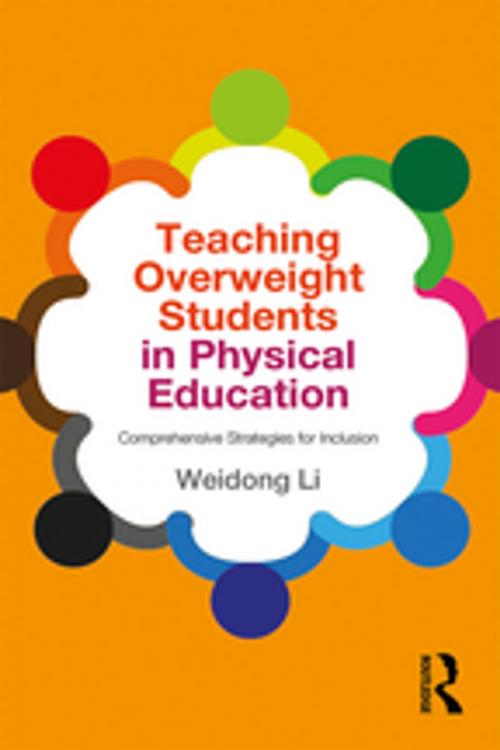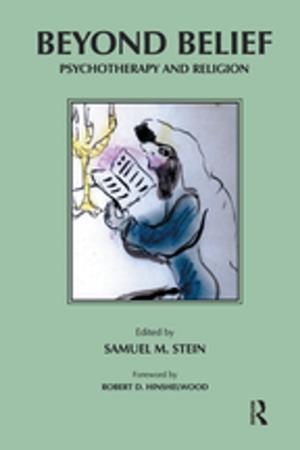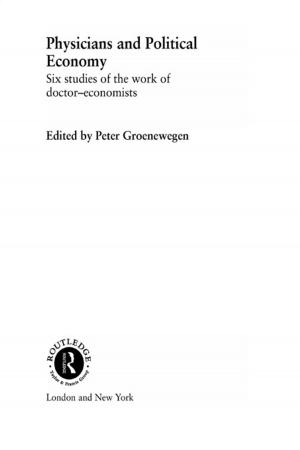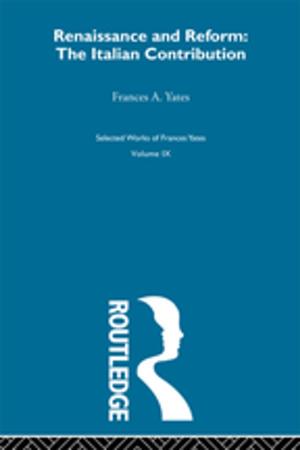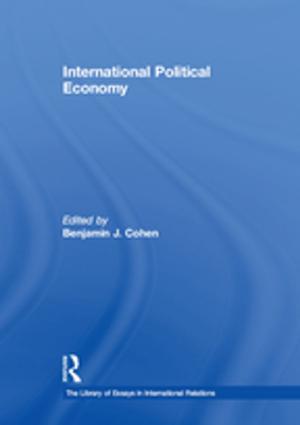Teaching Overweight Students in Physical Education
Comprehensive Strategies for Inclusion
Nonfiction, Health & Well Being, Psychology, Developmental Psychology| Author: | Weidong Li | ISBN: | 9781317553670 |
| Publisher: | Taylor and Francis | Publication: | December 1, 2016 |
| Imprint: | Routledge | Language: | English |
| Author: | Weidong Li |
| ISBN: | 9781317553670 |
| Publisher: | Taylor and Francis |
| Publication: | December 1, 2016 |
| Imprint: | Routledge |
| Language: | English |
Overweight students often suffer negative consequences with regard to low physical ability, skills, and fitness; obesity-related health implications; teasing and exclusion from physical education by their peers; and psychosocial and emotional suffering as a result of weight stigma. Widespread obesity and its negative consequences have presented an unprecedented challenge for teachers, who must include overweight students in physical education activities while striving to provide individualized instruction for diverse learners and foster positive learning environments. Educators stand to benefit greatly from specific knowledge and skills for reducing bias and including overweight students.
Teaching Overweight Students in Physical Education offers a compact and easy-to-read take on this problem. It begins by summarizing information on the obesity trend, weight stigma, and coping mechanisms. Next, it introduces the Social Ecological Constraint Model, which casts the teacher as an agent of change who is aware of and manipulates a variety of factors from multiple levels for effective inclusion of overweight students in physical education. Finally, it provides detailed strategies guided by the conceptual model for instructors to implement into their physical education classes. In all, this book provides a map for successfully including overweight students and offers practical strategies to help physical education teachers create inclusive and safe climates, and design differentiated instruction to maximize overweight or obese students’ engagement and learning.
Comprehensive, evidence-based, and timely, this book is tailored for physical education educators and practitioners, but will also benefit parents of overweight children by providing them with strategies for educating their children on how to cope with stigma and weight-related teasing.
Overweight students often suffer negative consequences with regard to low physical ability, skills, and fitness; obesity-related health implications; teasing and exclusion from physical education by their peers; and psychosocial and emotional suffering as a result of weight stigma. Widespread obesity and its negative consequences have presented an unprecedented challenge for teachers, who must include overweight students in physical education activities while striving to provide individualized instruction for diverse learners and foster positive learning environments. Educators stand to benefit greatly from specific knowledge and skills for reducing bias and including overweight students.
Teaching Overweight Students in Physical Education offers a compact and easy-to-read take on this problem. It begins by summarizing information on the obesity trend, weight stigma, and coping mechanisms. Next, it introduces the Social Ecological Constraint Model, which casts the teacher as an agent of change who is aware of and manipulates a variety of factors from multiple levels for effective inclusion of overweight students in physical education. Finally, it provides detailed strategies guided by the conceptual model for instructors to implement into their physical education classes. In all, this book provides a map for successfully including overweight students and offers practical strategies to help physical education teachers create inclusive and safe climates, and design differentiated instruction to maximize overweight or obese students’ engagement and learning.
Comprehensive, evidence-based, and timely, this book is tailored for physical education educators and practitioners, but will also benefit parents of overweight children by providing them with strategies for educating their children on how to cope with stigma and weight-related teasing.
